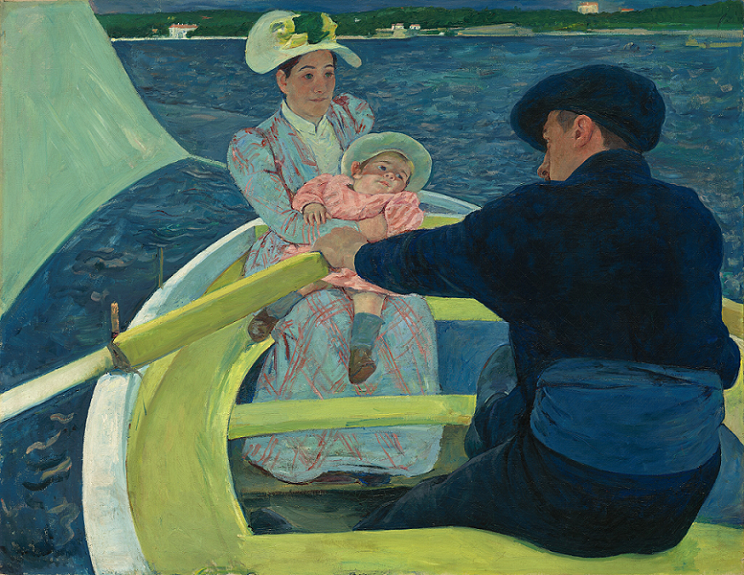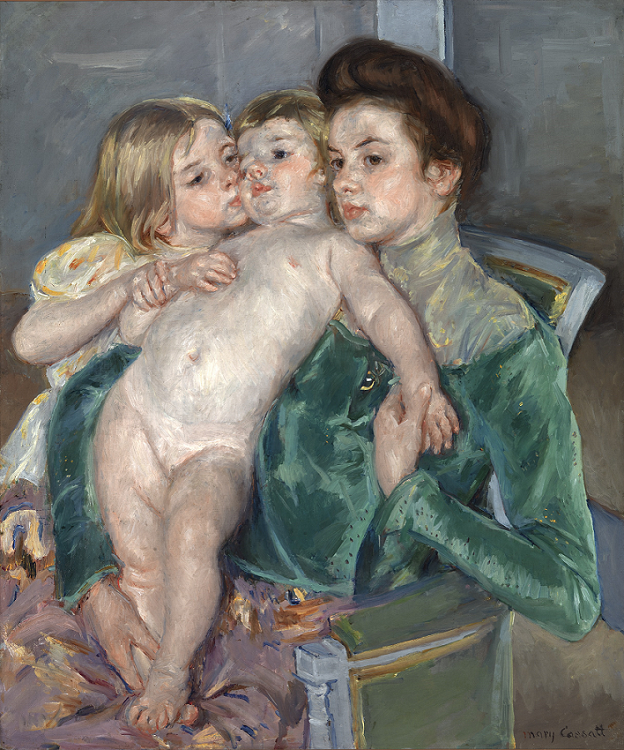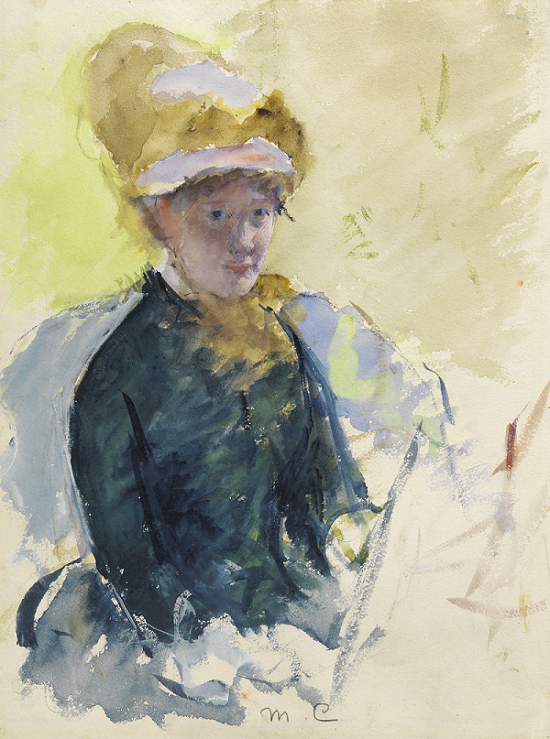Background
Mary Cassatt (1844–1926) was born in Allegheny, Pennsylvania, into an upper-class family. She started studying art at the Pennsylvania Academy of Fine Arts when she was 15 years old. Although her parents did not want her to become a professional artist, they allowed her to continue her studies in Europe. In 1874, she moved to Paris permanently.
In Paris, Mary Cassatt befriended the famous French painter, Edgar Degas. Degas was part of a group of painters known as the Impressionists. He invited Cassatt to join and exhibit her work with the group. She was the only American member of the Impressionists. The Impressionists were famous for depicting modern life in their art, using short brush strokes, bright colors, and bold depictions of light.
About the Image
As an artist, Mary Cassatt focused on the different roles of modern middle- and upper-class women, particularly in their private and social lives. She provided a unique perspective as a female artist in a predominantly male world. Her works portrayed women’s private lives, making visible the intimate work women performed in the home.
The paintings The Caress and The Boating Party depict women as wives and mothers. The bond between mothers and children was a popular theme in Mary’s work. She painted women in their domestic roles as dictated by society. Though, at the same time, she did not conform to this expectation as a working woman painter. In her self-portrait, she shows herself as a professional artist. In addition to not fulfilling the domestic ideal in her own life as a working artist, Mary appreciated that this ideal was out of reach for most working-class women, who had to provide for their families.
Vocabulary
- Impressionists: A group of painters that focused on the effects of light and color rather than exact details.
Discussion Questions
- What do Mary Cassatt’s paintings reveal about the different roles of middle- and upper-class women during this time period? How can you tell what social class is being depicted?
- How did Mary Cassatt’s gender and social status influence her work as an artist?
- Why is it important to include Mary Cassatt in both conversations about 19th century art and 19th century womanhood?
Suggested Activities
- Have students create their own Impressionist paintings of what 21st century womanhood means to them.
- Mary Cassatt was an American artist who spent most of her life in Paris. Pair her story with the life stories of Edith Wharton and Edmonia Lewis, two other American women who lived in Europe for many years. How did their backgrounds influence their work?
- Consider the influences of industrialization on middle-class women. Combine this resource with the experiences of department store clerks. How did industrialization make their lives easier? How did it make their lives more challenging?
Themes
AMERICAN CULTURE









